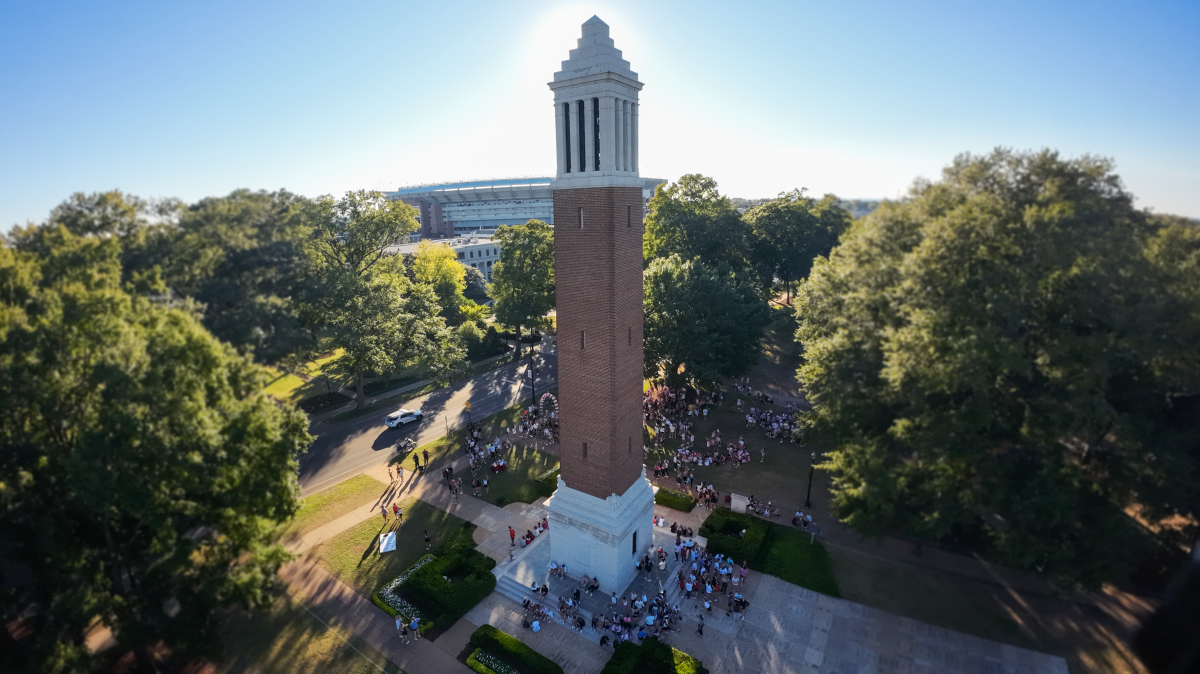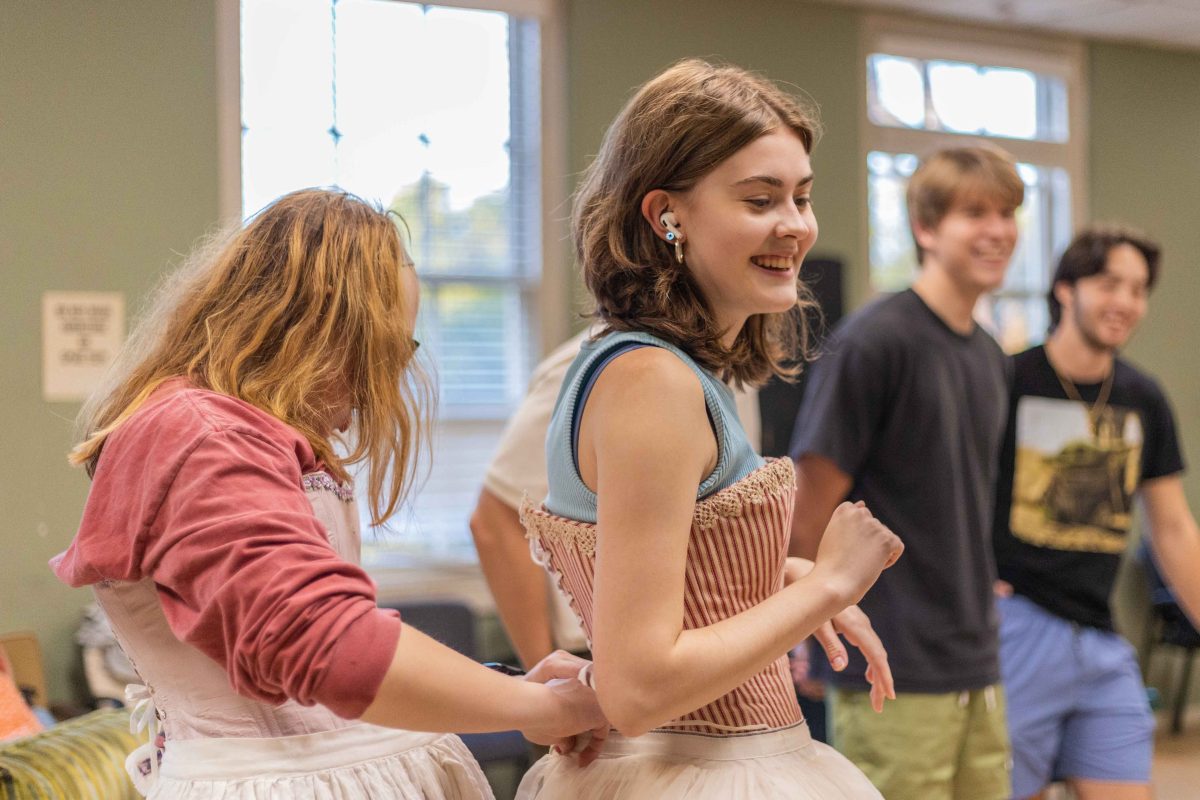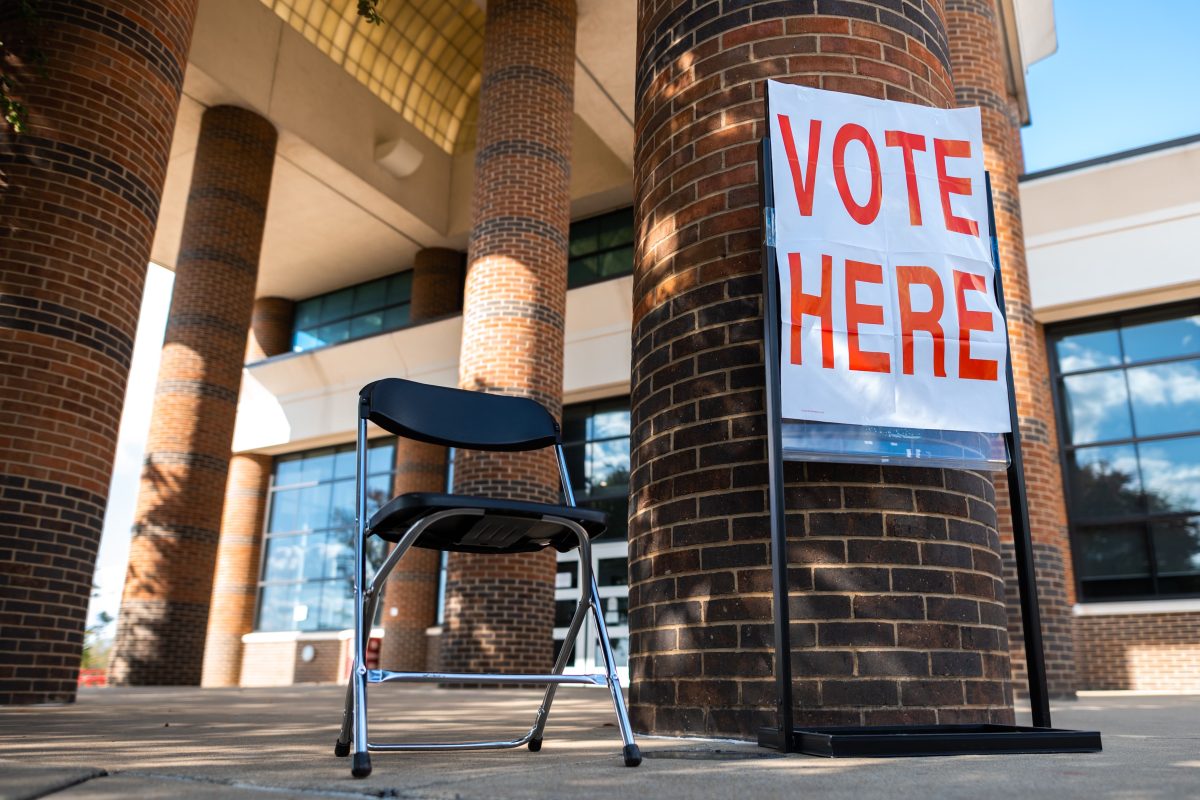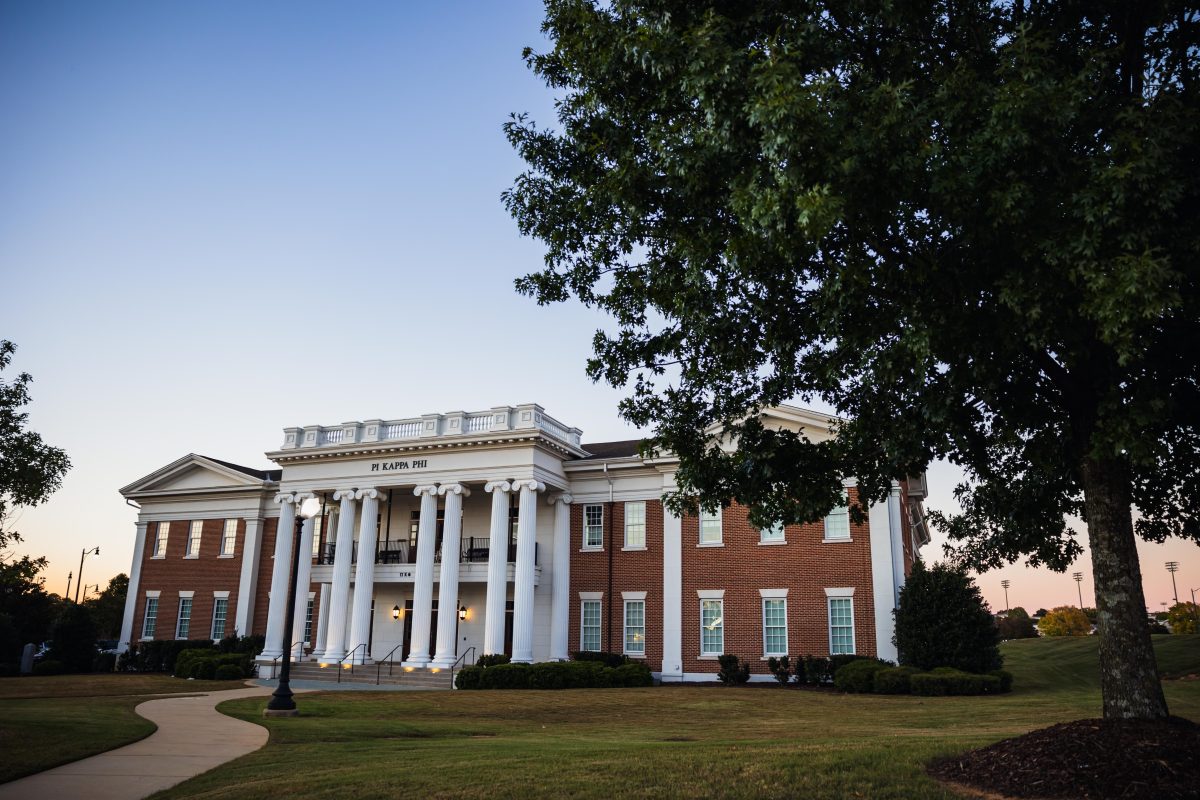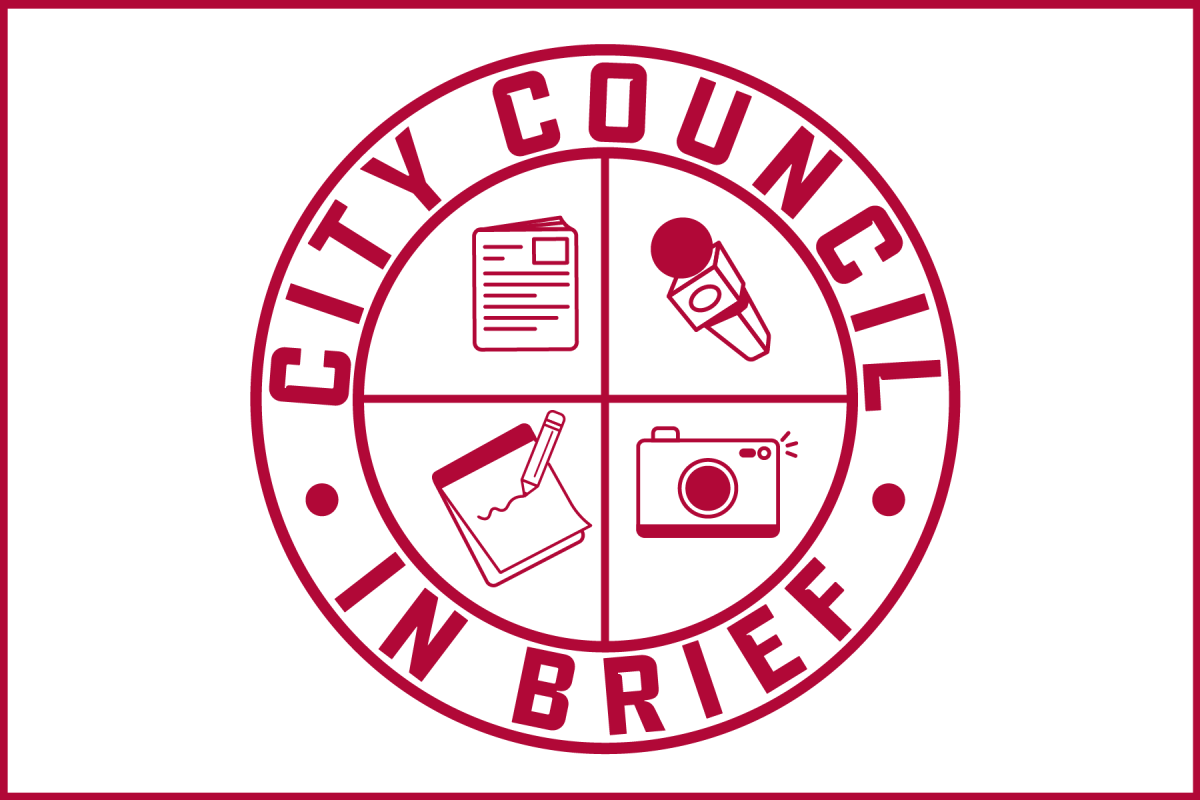It’s the end of an afternoon class block, and when Terrel Johnson’s bus reaches the soccer fields, the stop is full. He opens the doors and a dozen or so students stumble aboard. Most pass by, some give a little nod, but Johnson makes sure to say an audible “hello” to each and every one.
“A lot of ‘em have faces, none of ‘em have names,” Johnson says.
The doors snap shut and the bus rumbles in the direction of the hub, ending an enormous loop that has taken him around the quad, past Bryant-Denny Stadium, and down Paul W. Bryant Drive. Since 11 a.m., Johnson has driven it seven times.
To Ralph Clayton, assistant manager of Transportation Services, Johnson’s bus is a small, blue icon tracing a map on his computer screen. It’s a tangle of colored lines, dots and arrows that represent a system Clayton and his colleagues have fine-tuned over five years.
“Our biggest priority is to maintain spread,” Clayton says.
Spread, or keeping the buses from stacking too close on their routes, has been just one of the many obsessions for Clayton and his team as they have struggled to provide streamlined mass transit to a campus the size of a small city. With each route completed in 25 to 30 minutes and four buses to a route, a wait time should be no more than about five minutes. That’s in a perfect world; it all goes out the window with one spot of bad traffic.
The morning rush can be especially fickle.
“I usually have to rush to my class, or I’m 30 minutes early,” says Cassy Kaplan, who boarded Johnson’s bus from one of the commuter lots. But she admits the Ride still beats the alternatives.
“If it weren’t for the CrimsonRide, I would have to buy one of those expensive parking passes,” she says.
Johnson used to drive trucks, and would go days without exchanging more than a few words with anyone. On the CrimsonRide, he develops a rapport with his regulars. He knows them by their faces and the color of their backpacks; a relationship that shows itself in a few lines of small talk.
“You’re constantly speaking with someone, they’re speaking with you, and you feel good,” he says. “I enjoy it every day.”
***
After four years of scrubbing vomit, Jimmy Falls knows the type. He lets those kids ride shotgun or near the door, ready to pull the van over at the first sign of impending regurgitation.
But the girls at Publix aren’t that far gone. They manage to open the door, stumble into the van, and mutter “13th street.” One of the girls recognizes him, and they start to babble like happy 4-year-olds.
“The bad thing is, they truly expect you to remember their names,” says Falls, who has already carried scores of 348-RIDE patrons two hours into his shift. “Sometimes they get their feelings hurt.”
Back at the hub, dispatcher Ginnifer Carnethon’s phone rings constantly, sometimes going off as soon as she puts down the receiver.
“This is a slow night for us,” she says, passing the phone dispatcher-in-training. “Usually they really keep us going.”
Carnethon directs most callers to the 348-RIDE Express, a supplement shuttle to the dispatch vans that runs a perimeter loop until 3:30 a.m. Finally, she gets a worthy request: an on-campus pickup heading to Publix. She adds it to the queue and dispatches a driver in seconds.
The service, which picked up 11,716 students last month, has its limits. To get a lift, the pickup or drop off location must be on campus, and the vans don’t go to bars or restaurants. The driver may have to make a stop or two en route, but a pickup time is unlikely to be more than ten minutes.
“The later in the night it gets, we pick up students who have been drinking a little bit. Sometimes they can be not so patient,” Carnethon says.
On the street, Falls’ passengers aren’t always hard-driving weekenders – he picks up late-night students, athletes and even faculty – but it’s the delirious roustabouts that have filled his four-year career with backseat brawls, blubbery break-up confessions and hurled beer bottles. One drunk tried to punch out his side window.
But Falls keeps his head down and does his job.
“If someone were to get hurt, and you had anything to do with it whatsoever, their folks would probably try to sue us,” Falls says. “You’ve got to think ahead and not get involved in those situations.”
“What I like best is knowing that we get students from the stop and to home safely,” says night supervisor Stan Snead. Still, his drivers don’t try to be heroes. When it comes to the worst cases, Snead says “We let UAPD deal with those people.”
A flustered driver walks into the office and calls Snead outside. One of her pickups failed to negotiate a stoop and launched headfirst into the side of the door, leaving a small dent.
Snead uses the opportunity to show off the van, one of five sparkling 11-seaters the University bought for the program in January. It’s not every day you get new vehicles, but for the drunk student, it’s just another Thursday night.
***
As the 348 RIDE vans pack it in for the morning, Bryan Strickland has been at work well before dawn, making sure each and every one of the 22 CrimsonRide buses is ready for a full day’s work.
As soon as the drivers start to arrive, they come to him with problems – small hiccups somewhere within the mechanical juggernauts that the previous drivers failed to report the night before. Whether a flickering light or power steering leak, Strickland takes them as they come, and one by one the buses lumber out of the yard in the direction of the campus.
At 7:30 a.m., the last driver to leave has a broken radio.
“I can drive all day, but if I don’t have my music, oh my God!” she says. But he’ll have to fix it later. The bus runs, and for the CrimsonRide, there’s work to be done.



